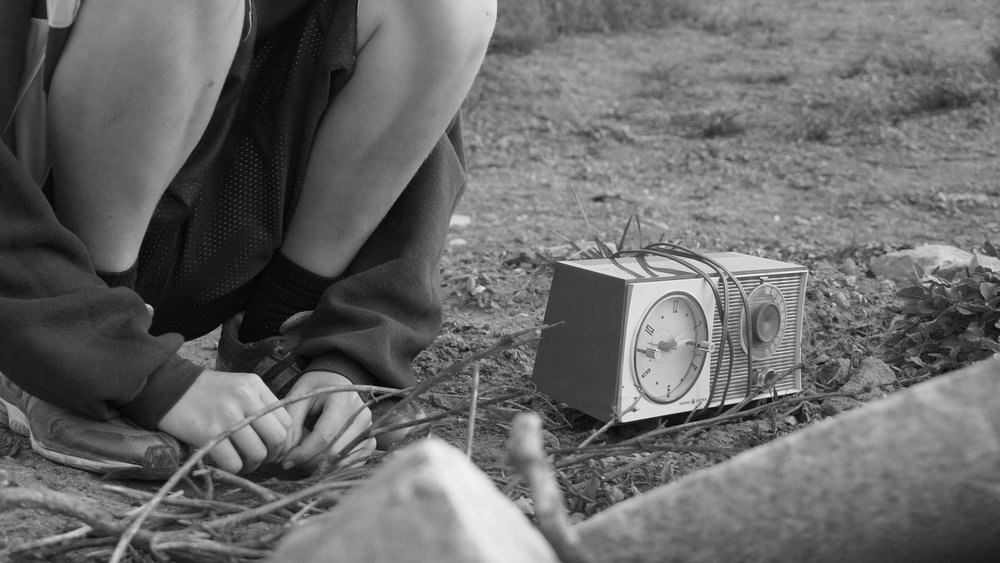Long Shot, Medium Shot, Medium Close-up, and Close-up
Download above document for printing
Long Shot
Shows the subject within context or location. Look at the subject above within the red rectangle. One thing I'd like to point out is that this shot is taken from a low angle, making the subject appear more tall and powerful.
Also, regarding the framing, there isn't an excess of space below the subject's feet or above his head. In a long shot like this, you never want to cut off the feet or cut off part of the head, but you also do not want to have so much room above the head and below the feet that your subject is floating in a compositional no-man's land. There is just enough space below the feet to give him a seemingly solid ground to stand on and about three fists of head room above the head.
More on head room here: (until 1:40)
More on the long shot: If you look below at this Rule of Thirds overlay, you'll find that the subject is framed between the intersecting lines on the left of the screen and the border. For a long shot, you can frame anywhere from that intersecting third, to the edge of the frame, but do not have any part of your subject "cut off" by the border of the frame.
Here is an example of a Long Shot from a film (centered) but using a hallway as a framing device:
Lets look at the Rule of Thirds overlay with a medium shot:
Look at the purple outline for the Medium Shot.
A medium shot shows a subject from the thigh area to above the head. This shot has about 1-2 fists of head room between the top of the head and the screen border (looking at the top purple border)
The point of the shot is also to show a subject within their context and in many cases give the viewer a sense of what the subject is doing.
As you can see with the rule of thirds overlay, the subject overlaps the left intersecting thirds exactly.
One thing to remember about any shots where you are cropping out a part of a subject is that you never want to crop at a joint. This means that the frame of the image will never intersect the knee, wrist, elbow, or ankle. You should also never cut off part of a hand or part of a foot.
Here are a couple of examples of medium shots from films:
OK! Lets look at a Medium Close-up shot!
Looking at the green outline above, you can see that the subject is cropped between the elbow and shoulder, to about one fist length above the head.
Medium close-ups are used many times in interviews and narrative films when the subject being "looked at" either by another character or by the interviewee.
If you look at the rule of thirds overlay above, you can see that the subject overlaps the left "thirds" again.
Here is a detail without the "thirds" overlay
Examples of medium close-ups:
Lastly, lets check out a Close-up shot!
Detail:
I love the fact that the caption in the above image says that it shows the subject subjectively. I know that sounds super redundant, but a lot of times in film a director uses close-ups to show that a character is looking at something or someone. If a film cuts from a close-up shot of someone looking somewhere offscreen, then the audience will assume that the next shot is what they are looking at.
A close-up shot crops a subject below the chin (at the neck) and above the head. In order to determine head room, you can always make sure that the subject's eyes intersect the top thirds. Once you do that the rest of the composition will fall into place.


















